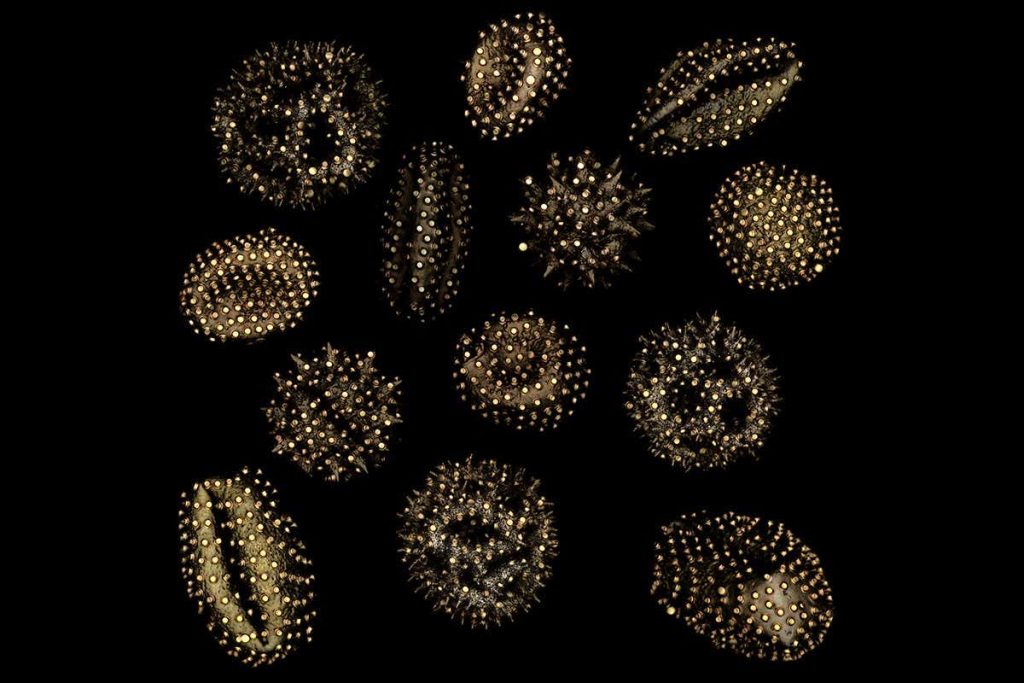Patterns of microscopic discs, rings or letters can be added to microrobots or stretchy electronics with a dissolved sugar mixture
Physics 24 November 2022
Grains of pollen that have had microscopic discs deposited onto them with a candy-like substance
Gary Zabow/National Institute of Standards and Technology (NIST)
A sugar mixture similar to hard candy studded with tiny metal discs or rings has been used to deposit patterns onto microscopic objects. This method of creating texture on small objects could be useful for biomedical robots or flexible electronics.
To give microscopic robots or small electronic circuits more functionality, researchers often embellish their surfaces with patterns of even tinier objects, such as magnets. They often make these components on a flat, clean surface and then stamp them onto the bigger object.
But accurately applying them in this way becomes difficult when the receiving objects are not smooth, says Gary Zabow at the National Institute of Standards and Technology in Colorado. He worked out how to use sugar and corn syrup to add micropatterns to even the most irregular and jagged objects.
Advertisement
He first arranged micron-sized discs and rings of silver or platinum into a pattern, such as an array or a letter, and then poured a warm mixture of sugar and corn syrup over it. Adding corn prevents the sugar from crystallising and disrupting the pattern. The components got stuck in the mixture as it solidified into something similar to hard candy. Zabow then put this hardened mixture on the object he wanted to pattern and re-heated it, so it spread and wrapped around the object beneath it – like a Jolly Rancher hard candy melting in the sun. Finally, he dissolved the sugar mixture with water, and only the components that were stuck within it remained on the object’s surface.
False-colour image of letters made of gold that were transferred onto a strand of hair
Gary Zabow/NIST
Zabow tested the method on objects ranging from micron-sized metal cubes and glass beads to grains of pollen, individual hairs and red blood cells. He says that because sugar is not toxic, this method could potentially be used for manufacturing microrobots and nanoparticles that enter the human body in biomedicine.
Cunjiang Yu at Pennsylvania State University says that the method works better than many existing techniques for patterning very small objects. It could be a good match for making flexible electronics that can be integrated into biological tissues or wearables, among many other applications, he says.
This kind of micropatterning is still in its infancy, and Zabow wants other researchers to try it out. “I hope that other people will think of things that I haven’t yet thought to try. It seems to be fairly easy to experiment further – you just take a Jolly Rancher candy, and it works,” he says.
More on these topics:

